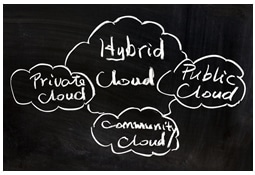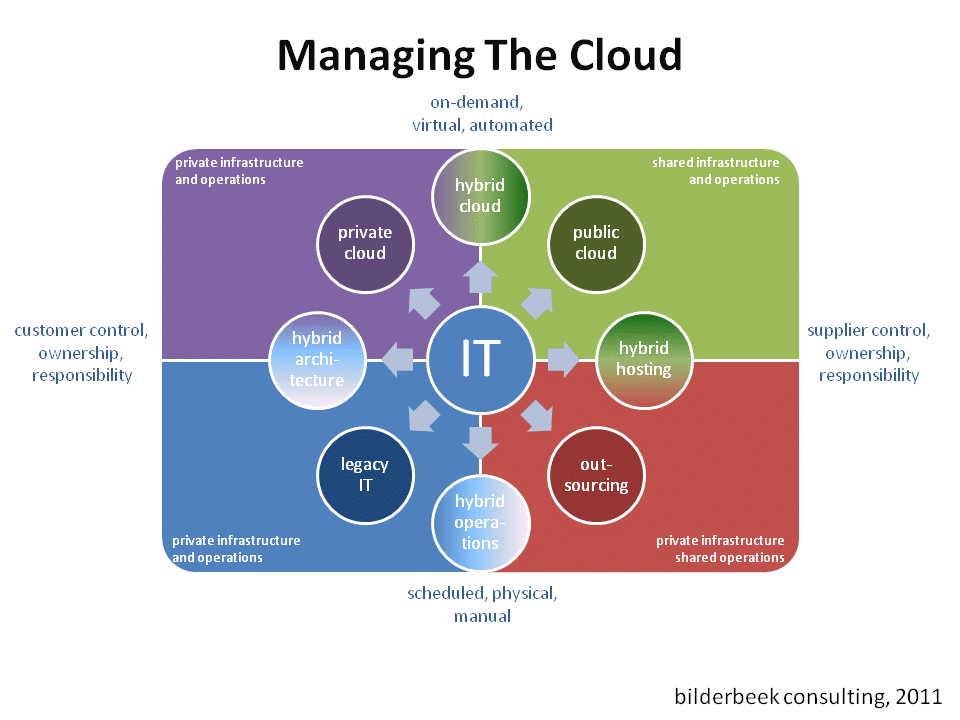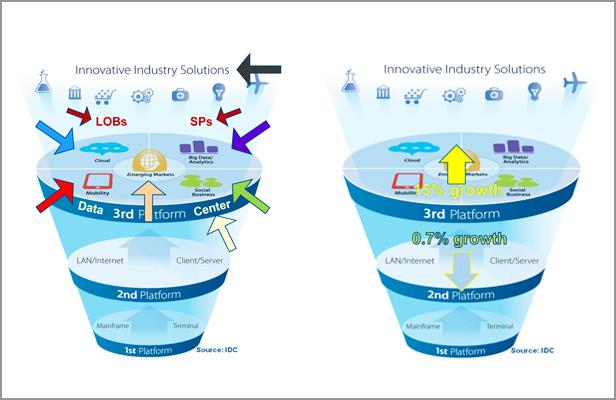 Sometimes I get a bit fed up with the concept of digital disruption. Sure, the combination of digital evolutions, altering customer behavior and innovative ways of doing business, does have a “disruptive” effect and we’re still in very early stages, taking into account that the large majority of “things” is not connected yet, for instance.
Sometimes I get a bit fed up with the concept of digital disruption. Sure, the combination of digital evolutions, altering customer behavior and innovative ways of doing business, does have a “disruptive” effect and we’re still in very early stages, taking into account that the large majority of “things” is not connected yet, for instance.
Digital transformations happen where business (including marketing), IT and, in the end, the user/customer/you/me meet. It’s what the technology leads to that matters, however: opportunities, risks and the human element.
Disruption is not just about digital technologies. Organizations and their business models have always been “disrupted” by the human capacities of innovation, change (a hard one for many) and questioning what is generally accepted (even harder) as some drivers.
Digital disruption, lack of understanding or lack of being out there and being brave?
I remember how the arrival of e-commerce “disrupted” the existing models in the ICT distribution channel (with direct sales models, the horror!). Yet, at the same time, when looking at it today, I notice many of the traditional models in this industry still exist and in several cases even work very well. True, they have changed and continue to evolve and in some industries the impact was far bigger. Some words that come to mind: music, books, Amazon.
Many organizations got in trouble by not seeing the digital disruptions, to use the term again, and the consequent need of digital transformation, because they didn’t have a strategy in place. What they mainly failed to see, however, is how technological but also societal changes would affect the needs and preferences of customers, be it intermediaries or end customers. The behavior of people. Was this because of not understanding the impact of technology or because of not being “out there” (listening, analyzing, understanding, just being out there to start with…) and maybe even be bold and innovative? I guess it’s all connected.
I don’t have to repeat once more the customer journey has changed (it’s dynamic, like everything really is) and keeps changing. However, the need for more flexibility, agility, customer-responsiveness and whatever buzzword we can use, is not just happening in the way we do business and the ways customers buy, interact, consumer and whatnot.
Hybrid models and innovation: there is never a one-size fits all answer in business, technology and life
It’s also reflected in the ways we work, organize ourselves, collaborate and look at ICT. Innovation and change are a constant in history and in business as there is never a one-size fits all answer. Not in marketing, not in business, not in ICT, never, ever. Having worked on the crossroads of marketing, business and technology since, like forever, I can’t keep emphasizing enough how essential it is to involve ICT in the whole business equation and vice versa. Digital transformation requires it. But you knew that I hope: ICT, customer behavior, business evolutions and, well, everything is connected and thus by definition shows similar patterns.
Flexible business (or call it customer-adaptive, agile, whatever) goes hand in hand with collaborative business, partnerships and new ways to approach ICT infrastructure, requirements and services.
Recently, I talked to several ICT professionals from major tech corporations about the evolutions regarding the network (in the ICT sense), cloud computing, data centers, etc. from, among others, the end customer demand perspective (in this case end customers being major corporations) and the final user (you, me) perspective, with BT Global Services (for the record, a partner).
A word that always came back was “hybrid” (with apologies for yet another term rooted in biology such as ecosystems, holism, etc.). Hybrid and intelligent networks, hybrid cloud environments, everything hybrid. It’s not new in an ICT and cloud context but it’s gaining more traction and recognition as the way to go in the cloud. Not so much as an intermediary approach before everything moves “en masse” to the public cloud as some vendors would like. In fact, chance is real that we’ll keep having hybrid solutions whereby some processes, services or applications move from the private cloud to the public cloud, behind the firewall, on premise, off-premise, whatever (and often move back and then somewhere else etc.) for quite some time, maybe even for as long as we know, despite evolutions in critical challenges such as security, which is now also offered as a cloud service, focusing on the “user“.

Embracing collaboration and mixture
Organizations today want a highly flexible and dynamic offering to meet ongoing evolutions and benefit from the (big) data explosion, from storing to analyzing, finding and deleting data when needed in environments where it’s increasingly hard to locate them. And of course to use data and information in an intelligent way (data and big data as such is utterly meaningless). They want choice and deciding where they put business-critical applications and where they put others. And they want to be able at any time. They want a hybrid offering, a hybrid cloud. In fact, hybrid as in what the cloud in the end really is about: flexible and adjustable to the reality of the organization, its goals, customers, users, employees, ecosystems, you name it. Sounds familiar from a marketing and business perspective too, doesn’t it?
So, isn’t that in the end what agile business and digital transformation are all about as well? Flexibility and the possibility to dynamically adapt (or pro-dapt) as reality and technology change? In fact, isn’t all business hybrid business and isn’t that what the collaborative economy is really about? Innovation partially lies in adaptiveness and having the contextually best mix to overcome the status quo and combine and connect the dots. Hybrid.
Disruption will always happen, digital or not. Don’t miss the digital transformation challenge sitting in front of you. To see it: get out there and innovate.
To be ready for it: embrace collaboration, flexibility and the hybrid and adaptive models the cloud, the third platform, lots of future evolutions and, in the end, your business and customers, are all about. Hybrid models, diverse and dynamic, as reality, you and me.


